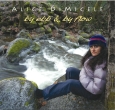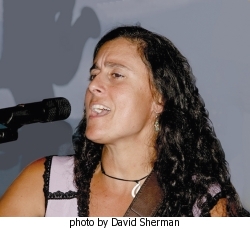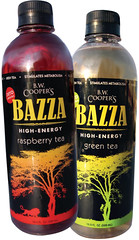Moderator: Karen G. Schneider – “You’re going to go un-suck your OPACs, right?”
Speaker: Roy Tennant
Tennant spent the last ten years trying to kill off the term OPAC.
The ILS is your back end system, which is different from the discovery system (doesn’t replace the ILS). Both of these systems can be locally configured or hosted elsewhere. Worldcat Local is a particular kind of discovery system that Tenant will talk about if he has time.
Traditionally, users would search the ILS to locate items, but now the discovery system will search the ILS and other sources and present it to the user in a less “card catalog” way. Things to consider: Do you want to replace your ILS or just your public interface? Can you consider open source options (Koha, Evergreen, vuFind, LibraryFind etc.)? Do you have the technical expertise to set it up and maintain it? Are you willing to regularly harvest data from your catalog to power a separate user interface?
Speaker: Kate Sheehan
Speaking from her experience of being at the first library to implement LibraryThing for Libraries.
The OPAC sucks, so we look for something else, like LibraryThing. The users of LibraryThing want to be catalogers, which Sheehan finds amusing (and so did the audience) because so few librarians want to be catalogers. “It’s a bunch of really excited curators.”
LibraryThing for libraries takes the information available in LibraryThing (images, tags, etc.) and drops them into the OPAC (platform independent). The display includes other editions of books owned by the library, recommendations based on what people actually read, and a tag cloud. The tag cloud links to a tag browser that opens up on top of the catalog and allows users to explore other resources in the catalog based on natural language tags rather than just subject headings. Using a Greasmonkey script in your browser, you can also incorporate user reviews pulled from LibraryThing. Statistics show that the library is averaging around 30 tag clicks and 18 recommendations per day, which is pretty good for a library that size.
“Arson is fantastic. It keeps your libraries fresh.” — Sheehan joking about an unusual form of collection weeding (Danbury was burnt to the ground a few years ago)
Data doesn’t grow on trees. Getting a bunch of useful information dropped into the catalog saves staff time and energy. LibraryThing for Libraries didn’t ask for a lot from patrons, and it gave them a lot in return.
Speaker: Cindi Trainor
Are we there yet? No. We can buy products or use open source programs, but they still are not the solution.
Today’s websites are consist of content, community (interaction with other users), interactivity (single user customization), and interoperability (mashups). RSS feeds are the intersection of interactivity and content. There are a few websites that are in the sweet spot in the middle of all of these: Amazon (26/32)*, Flickr (26/32), Pandora (20/32), and Wikipedia (21/32) are a few examples.
Where are the next generation catalog enhancements? Each product has a varying degree of each element. Using a scoring system with 8 points for each of the four elements, these products were ranked: Encore (10/32), LibraryFind (12/32), Scriblio (14/32), and WorldCat Local (16/32). Trainor looked at whether the content lived in the system or elsewhere and the degree to which it pulled information from sources not in the catalog. Library products still have a long way to go – Voyager scored a 2/32.
*Trainor’s scoring system as described in paragraph three.
Speaker: John Blyberg
When we talk about OPACs, we tend to fetishize them. In theory, it’s not hard to create a Wowpac. The difficulty is in creating the system that lives behind it. We have lost touch with the ability to empower ourselves to fix the problems we have with integrated library systems and our online public access catalogs.
The OPAC is a reflection of the health of the system. The OPAC should be spilling out onto our website and beyond, mashing it up with other sites. The only way that can happen is with a rich API, which we don’t have.
The title of systems librarian is becoming redundant because we all have a responsibility and role in maintaining the health of library systems. In today’s information ecology, there is no destination — we’re online experiencing information everywhere.
There is no way to predict how the information ecology will change, so we need systems that will be flexible and can grow and change over time. (Sopac 2.0 will be released later this year for libraries who want to do something different with their OPACs.) Containers will fail. Containers are temporary. We cannot hang our hat on one specific format — we need systems that permit portability of data.
Nobody in libraries talks about “the enterprise” like they do in the corporate world. Design and development of the enterprise cannot be done by a committee, unless they are simply advisors.
The 21st century library remains un-designed – so let’s get going on it.



